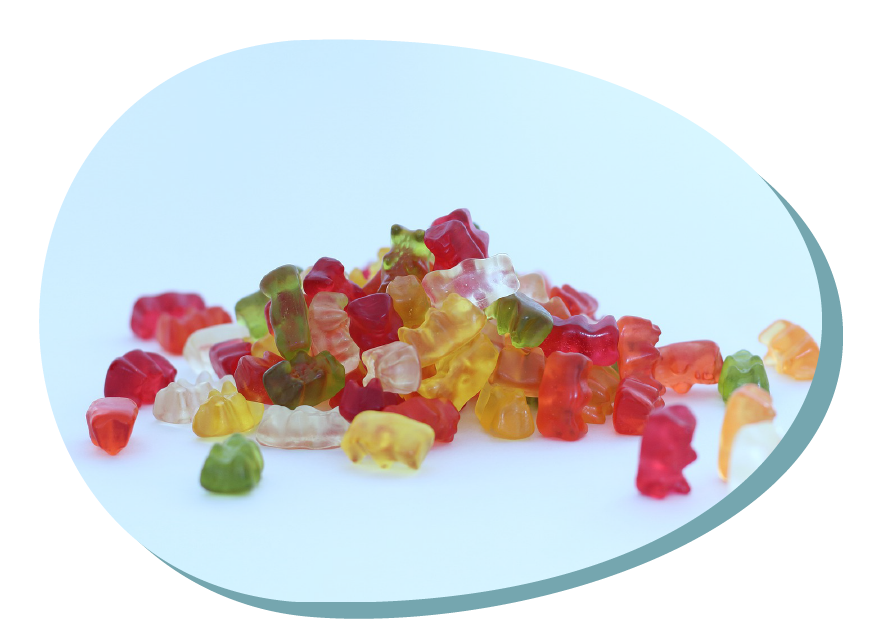Jelly beans and osmosis
Type of resource: Jelly beans and osmosis
Web address https://www.facebook.com/CentrumNaukiKopernik/videos/860788994775780/
Language: English, Polish
Description
Experiment – investigating the behaviour of jelly beans (gummy bears) in differetnt kinds of solutions. Discovering the chemical process of osmosis
Scientific concept introduced
Osmosis, measuring cup, solution, water, jelly beans
Creative and critical thinking
Critical thinking – analyzing, comparing
Mathematical reasoning
measuring the proper amounts of water, salt and sugar wody, soli i cukru, using the measuring cup
Scientific thinking
observing, predicting, drawing conclusions, formulating hypotheses
Learning how to learn
Learning how to learn: curiosity, motivation and engagement, reflecting on one’s own learning and knowledge
Additional
A/ Enriching scientific vocabulary
B/ Teamwork
C/ Fine motor skills development, following the rules of safety
Jelly beans and osmosis
Overall aims
Building the scientific concept of osmosis;
Supporting the development of scientific thinking with experiments
Creating the possibilities to develop the cooperation abilities with teamwork
Developing scientific language – supporting one’ own statements with empirical arguments
Vocabulary – keywords should be understood
Osmosis, measuring cup, solution, water, jelly beans
Expected learning outcomes (operational aims)
The child will be able to:
– Measure the right amount of water (5ml)
– Prepare solutions
– Correctly name the phenomena and objects studied
– Perform the experiment on his own
– Analyze and draw conclusions on the basis of the conducted research
– Independently experience, observe, draw conclusions and argue his statements (conclusions)
– Explain the phenomenon of osmosis
STEM skills – to which the learning unit is related to
CORE STEM SKILLS
Critical thinking – analyzing, comparing
Mathematical reasoning: measuring the proper amounts of water, salt and sugar wody, soli i cukru, using the measuring cup
Scientific thinking: observing, predicting, drawing conclusions, formulating hypotheses
Learning how to learn: curiosity, motivation and engagement, reflecting on one’s own learning and knowledge
ADDITIONAL SKILLS
– enriching scientific vocabulary
– teamwork
– fine motor skills
– following the rules of safety
Teaching methodologies/activity outline
Prepare: 7 glasses (beakers), 7 jelly beans – gummy bears, water, sugar, salt, vinegar, soda, coca cola, alcohol,, measuring cup for water, teaspoon, camera
Creating a problem situation: show jelly beans to children and ask the question
Problem question: What will happen when we throw jelly beans into different solutions? (water, salt solution, sugar, vinegar, coca cola, soda, alcohol)
Formulating hypotheses: jot down the child’s predictions.
Verification of hypotheses:
Conducting the experiment with the whole group:
1. ask the children, one by one, to prepare 5 ml of water in each beaker,
2. then sprinkle or add to each but one: a teaspoon of salt, a teaspoon of sugar, a teaspoon of soda, coca cola, vinegar, and alcohol).
3. Mark the beakers.
4. Then drop one jelly bear into each beaker.
5. Leave for 24 hours to observe the results.
Description of the results and formulation of conclusions:
Take the gummy bears (jelly beans) out of the beakers with tweezers and observe what happened.
Ask the children to compare it with a control gummy bear (jelly bean) that was left in empty glass
Ask the children to observe and explain: What happened to the gummy bears? Why did some of them become smaller and others larger than they were at the beginning? What is this phenomenon (process) called? What is osmosis and how does it work? Let the children explain with their own words what osmosis is about.
Tip for the teacher. Definition of osmosis: Osmosis is a process that occurs in all living organisms. It consists in passing through the semipermeable membrane of water molecules from a solution with a lower concentration to a solution with a higher concentration of molecules
Assessment of learning
Child’s working card – a drawing documenting the effects of the experiment, a photo of the results
Equipment and materials to be used in learning unit (tools, ingredients etc)
Jelly beans – gummy bears, water, sugar, salt, vinegar, soda, coca cola, alcohol, 7 beakers, measuring cup for water, teaspoon, inscriptions of solutions, work card – with results, camera
Kind of setting
Classroom
References – source
https://www.facebook.com/CentrumNaukiKopernik/videos/860788994775780/

